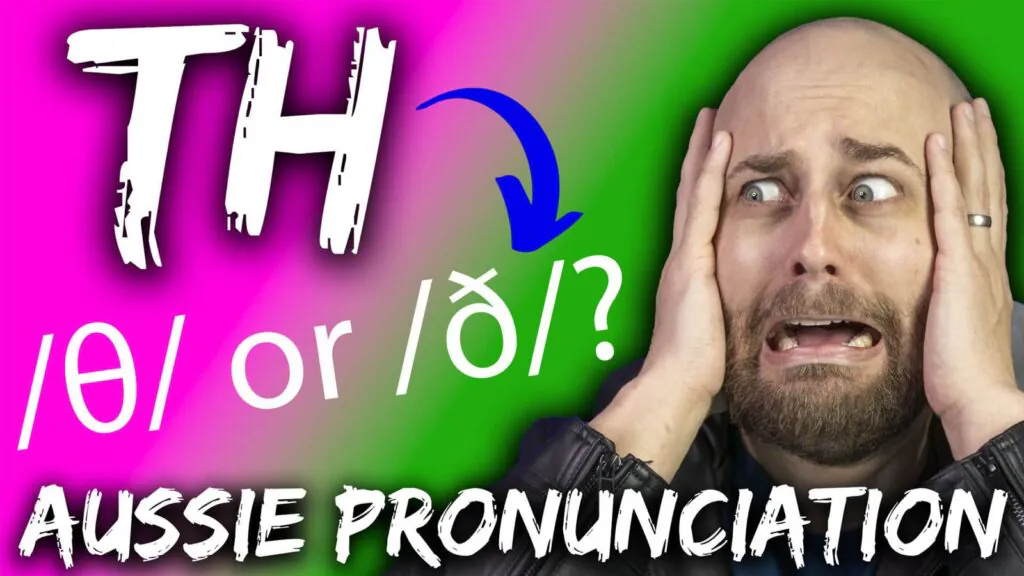AE 549: Australian English Pronunciation Course
In today’s Aussie English video/podcast I show you a little behind the scenes look at the Australian English Pronunciation Course in the Aussie English Classroom.
AE 549: Australian English Pronunciation Course
What’s going on, guys? Welcome to this episode of Aussie English.
Today, I want to talk to you about vowel pronunciation in English. Now, I have a lot of students and I have a lot of students who want to work on pronunciation lessons and most of the time these guys want to work on our pronunciation.
So, it seems like generally in English you guys nail the consonants. Maybe you have a bit of difficulty with things like /h/ or aspirating /p/’s or the /th/, but generally, you guys are pretty good at consonants, but it’s the vowels that you find really difficult whether it is that your language doesn’t have those vowels in the language naturally or whether it is that you spent a lot of time learning American or British English only to then move to Australia or come to Australia and then want to learn the Australian accent.
So, I’ve been working on an Australian English Pronunciation course in the Aussie English Classroom, guys, and I have just added another 20 pronunciation tutorials to that course.
So, I thought today I would take you through it and I will show you the /ɜː/ video because the /ɜː/ sounding words like ‘word’, ‘girl’, ‘world’, that sound seems to be trumping a lot of my students at the moment. Okay.
So, I want to give you a little behind the scenes look at this pronunciation lesson full of 20 different video tutorials that I’ve just put up, but I’ll also give you a look at the other stuff in this course and tell you about what I’m also planning on putting in there.
Alright, so if we bring up the page here, you’ll see once you enter the Aussie English Classroom, you can go to Aussie English Classroom on the side here, Spoken English Courses, and then this course will come up.
Down the side here you’ve got the lessons. So, we have the pronunciation tutorials that I’ve just added today. Then we have a whole bunch of exercises for those vowel sounds in the pronunciation tutorial, so afterwards do those exercises if you have specific vowels that you’re having trouble with.
I go through minimal pairs as well to compare really difficult now sounds, right. So, a good example of that is /iː/ and /ɪ/, right, sheet and shit, or beach and beach, eat and it. I know you guys find that really difficult.
So, there’s heaps of minimal pair comparisons in there so that you can hear the difference between those two sounds when they’re very close. I also have consonant pronunciation exercises in here for all the different consonants in English including the T-flap and the dark L.
And then, below that we have the minimal pairs for consonants as well so that you can go through and practice that. And then, I’ve also put in here recently the pronunciation of -ED endings. Anyway.
That’s all this stuff. But today I want to show you the different pronunciation tutorials that I’ve just added. So, you can click on that or you can use this expander here, and you can then open up any of these vowels that you’re having trouble with.
Now, I’ve tried to use the IPA so that you guys have sort of a reference, but I’ve run into some difficulties at time, because I realise that different Australians use different pronunciations. So, I’ve tried to sort of model it on my pronunciation as best I can. I’m not a linguist, so if I make mistakes in them, you know, forgive me for that, but I’ve done my best to try and help you guys with the IPA symbols for these sounds in English.
So, what you’ll see here is that beside the symbol I’ve got example words, you know. If you don’t know the IPA it may be confusing to just see the symbol. So, I’ve tried to give you common words, right. So, for /ɐː/ here, you’ve got ‘hard’ and ‘far’, for… where’s /ɜː/. /ɜː/ you’ve got ‘bird’ and ‘heard’.
So, what you will see when we go into any of these is a short video. I’ve tried to keep it concise so usually between one and a half to three minutes long. I give you a comparison of the vowels to other vowels that are similar to that in English. I talk about where the lips are to make that vowel sound. I show you the jaw movement as well as where the tongue is in the mouth. And then I give you some examples of other words. And I will also talk about how sometimes you may hear different pronunciations of this vowel sound.
So, for instance here, you might hear /eɐ/ instead of /eː/. Okay.
So, let’s just let you see the video. I’ll play that for you guys. Don’t forget if you want to sign up to the Aussie English Classroom, it is just 30 days your first 30 day trial is one dollar. It’s just one dollar, okay. That deal ends in five days on the first of April. If you want to check this out, don’t miss out on that. I do because I want to give anyone anywhere access to this course material so that they can try it before their subscription continues. You can cancel it anytime, guys, but it’s one dollar for 30 days. Get in there and give it a go.
Here’s the video. Thanks for joining me. See you later.
Vowel sound /ɜː/. It’s a long vowel sound. Those two dots are there in the IPA. /ɜː/.
This is very close to the schwa except for the fact that it’s a long vowel sound and the tongue in the mouth is a little bit lower than the schwa. So, if I were to say, /ə/, like ‘suppose’, /ə/. It’s very very very close, but it’s a long vowel sound.
The other thing with this vowel sound, because I know a lot of people have trouble with it, again, you need to focus on bringing those lips in. They don’t come into a tight little ring, but they are there kind of pursed and the sides of come in a little bit, right. /ɜː/.
Have a look at my mouth. /ɜː/. And if I change the position /eː/.
So, say that with me five times. /ɜː/ x 5.
Good job. And you’ll hear this in words like ‘bird’, ‘word’, ‘learn’, ‘world’, ‘girl’.
So, just remember to bring those lips in. It’s a long vowel. The tongue is in about the neutral sort of middle position maybe a little bit lower, but those sides of the mouth are the main point here to making that /e/ sound and not making it sound like /e/ or /eː/. Okay. The sides in.
Download Transcript + MP3
Here's what you get when you sign up!
- Read while you listen using the Premium Podcast player.
- Understand every word in every episode.
- Download all PDF transcripts and MP3s for 600+ episodes.
- Get access to bonus member-only episodes.












Responses